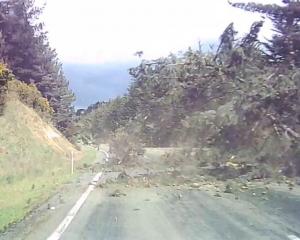University of New South Wales Associate Prof Rob Brander dropped dye into the water at St Kilda Beach, Dunedin, yesterday, demonstrating to Otago Girls' High School pupils how rips worked.
The purple dye was eventually swept out to sea following the current of a rip.
In Dunedin for a water safety symposium at the University of Otago, Prof Brander said increasing people's knowledge about rips had the potential to save lives.
The best way of doing this was through a concerted effort to get into schools and tell children about the danger they posed, he said.
Another way to educate beach-goers was to install signs, which included a visual representation of how to spot a rip.
The best way to spot a rip was to look for calm or dark patches of water between white water.
Some people thought such areas were good places to swim, because they looked less choppy, but ''white is nice, green is mean'', he said.
Rips were dangerous because they often caught people unawares.
''You lose your footing in a rip ... and all of a sudden you are 40m out and that's a bit scary.''
''Then people try to swim back against the rip and then they get tired and don't get anywhere and they panic.''
His biggest tip for those who got caught in rips was to relax.
''It's not taking you across the ocean, it's not taking you into shark-infested waters. It's just taking you for a ride, so just ride it out and signal for help if someone's around.''
Strong swimmers could try to swim out of rips by heading towards white water, he said.












